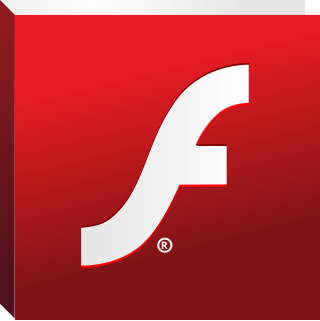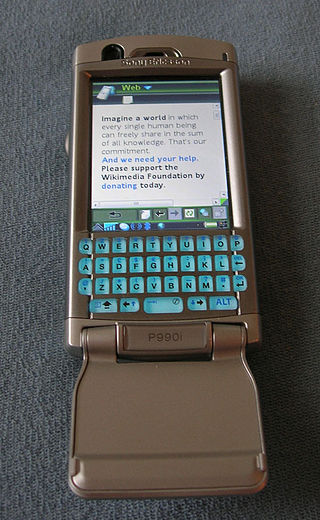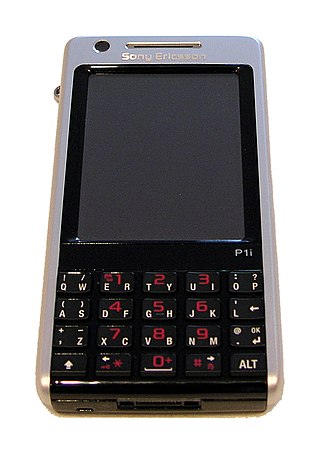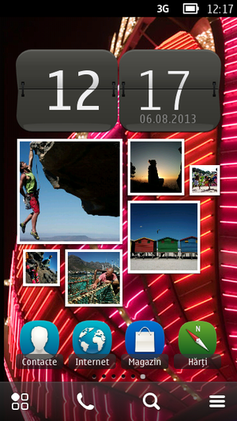Java Platform, Micro Edition or Java ME is a computing platform for development and deployment of portable code for embedded and mobile devices. Java ME was formerly known as Java 2 Platform, Micro Edition or J2ME.

The S60 Platform, originally named Series 60 User Interface, is a discontinued software platform and graphical user interface for smartphones that runs on top of the Symbian operating system. It was created by Nokia based on the 'Pearl' interface from Symbian Ltd. S60 was introduced at COMDEX in November 2001 and first shipped with the Nokia 7650 smartphone; the original version was followed by three other major releases.

UIQ is a discontinued software platform based upon Symbian OS, created by UIQ Technology AB. It is a graphical user interface layer that provides additional components to the core operating system, to enable the development of feature-rich mobile phones that are open to expanded capabilities through third-party applications.

The Sony Ericsson P900 is a Symbian OS v7.0 based smartphone from Sony Ericsson.

The Nokia 9210 Communicator is a third-generation Communicator series mobile phone produced by Nokia, announced on 21 November 2000 and released in June 2001. It greatly improved on the second generation Nokia 9110 Communicator, providing a colour main screen and using an ARM processor. It is one of the few mobile phones able to send and receive fax.

The Sony Ericsson T610, released in 2003, is a mobile phone manufactured by Sony Ericsson. It was one of the first widely available mobile phones to include a built-in digital camera, Bluetooth, color screen, joystick navigation, and was a very high selling model. The T630 was a later variant.

Adobe Flash Lite is a discontinued lightweight version of Adobe Flash Player, a software application published by Adobe Systems for viewing Flash content. Flash Lite operates on devices that Flash Player cannot, such as mobile phones and other portable electronic devices like Wii, Chumby and Iriver.
Java APIs for Bluetooth Wireless Technology (JABWT) is a J2ME specification for APIs that allows Java MIDlets running on embedded devices such as mobile phones to use Bluetooth for short-range wireless communication. JABWT was developed as JSR-82 under the Java Community Process.

The Sony Ericsson P990 is a mobile phone and the successor of the Sony Ericsson P910. The phone uses the UIQ 3 software platform, which is based on Symbian OS 9.1. During development, the phone was codenamed Hermione, after the Harry Potter character of the same name. It was introduced on 11 October 2005, but had a long delayed market release only in August 2006.

The Sony Ericsson W950i is the third UIQ 3 smartphone based on Symbian OS v9.1. It was announced on February 13, 2006, a week after the announcement of the Sony Ericsson M600.

The Sony Ericsson K800i, and its variant, the Sony Ericsson K790, are mobile phone handsets manufactured by Sony Ericsson. Launched in July 2006, the phones are the successor to the Sony Ericsson K750i, and are the first to be tagged with the Cyber-shot branding. Both of the phones feature a 3.2-megapixel digital camera complete with a xenon flash, a protective lens cover, and a new "BestPic" bracketing feature. The new "BestPic" feature takes 9 full quality snapshots of a subject in quick succession, allowing the user to choose the best shots from them. On the entertainment front, the phones have a media player supporting MP3, AAC/AAC+/eAAC+ and WMA music files and 3GP/MPEG-4 video files. The phones also feature a RDS FM radio, and a Memory Stick Micro (M2) slot for expandable solid state memory. The K790/K800 models are also the first Sony Ericsson mobile phones to use ATI's Imageon 2192 graphics engine, which delivers a full 3D gaming graphics for Java and full support for its 3.2-megapixel camera. It is the phone used by James Bond in the 2006 Casino Royale film and trailers.
The Location API for Java ME is a compact and generic Java 2 ME API that produces information about the device's present physical location to Java applications. This API can be optionally supported by mobile phone and PDA manufacturers, with the minimum Java platform required for this API being CLDC v1.1.

The Sony Ericsson K810i is a dual-mode UMTS phone with a 3.2 Megapixel camera with autofocus and 16x digital zoom. It has the full range of mobile entertainment and business features including video telephony, Memory Stick Micro removable storage, picture blogging, full HTML browser, RSS feed support, and music and video players. It is a later iteration of the Sony Ericsson K800i, and both phones have since been succeeded by the Sony Ericsson K850i.

The Sony Ericsson P1 is a mobile phone and the successor of the P990. It was the last of the Sony Ericsson "P" Smartphone series, introduced in 2002 with the Sony Ericsson P800 and it integrates many of the hardware features of its predecessor the P990 in the form factor of the M600. It was announced on 8 May 2007. There is a Chinese version of P1 called P1c. Compare with P1/ P1i, P1c lacks of 3G, thereby using EDGE which is much slower but more available especially in the US and parts of Europe.

The Sony Ericsson K550 is a mid range mobile phone. Announced on February 6, 2007, it was the successor of the K510 model sensor with two-LED photolight and an active lens cover for the camera lens protection and easy camera activation when taking pictures from the phone. The phone has a variant in the form of K550im which was the first i-mode enabled phone bearing the Cyber-shot logo trying to build into the success of the Sony Ericsson K610im model. The phone was one of the first Sony Ericsson models in which the user can find the Fast-Port system connector at the left side instead on the typical bottom part.
The phoneME project is Sun Microsystems reference implementation of Java virtual machine and associated libraries of Java ME with source, licensed under the GNU General Public License.

The Sony Ericsson Satio (U1) is a smartphone, announced by Sony Ericsson at the Mobile World Congress in Barcelona, Spain on 15 February 2009 as the Idou. It was released on 7 October 2009 in the UK in 3 colour schemes: Black, Silver and Bordeaux (Red).

Symbian was a mobile operating system (OS) and computing platform designed for smartphones. It was originally developed as a proprietary software OS for personal digital assistants in 1998 by the Symbian Ltd. consortium. Symbian OS is a descendant of Psion's EPOC, and was released exclusively on ARM processors, although an unreleased x86 port existed. Symbian was used by many major mobile phone brands, like Samsung, Motorola, Sony Ericsson, and above all by Nokia. It was also prevalent in Japan by brands including Fujitsu, Sharp and Mitsubishi. As a pioneer that established the smartphone industry, it was the most popular smartphone OS on a worldwide average until the end of 2010, at a time when smartphones were in limited use, when it was overtaken by iOS and Android. It was notably less popular in North America.

The Sony Ericsson Vivaz (U5i) is a smartphone, announced by Sony Ericsson on 21 January 2010. It was released on 5 March 2010 in the color schemes Moon Silver, Cosmic Black, Galaxy Blue and Venus Ruby.














